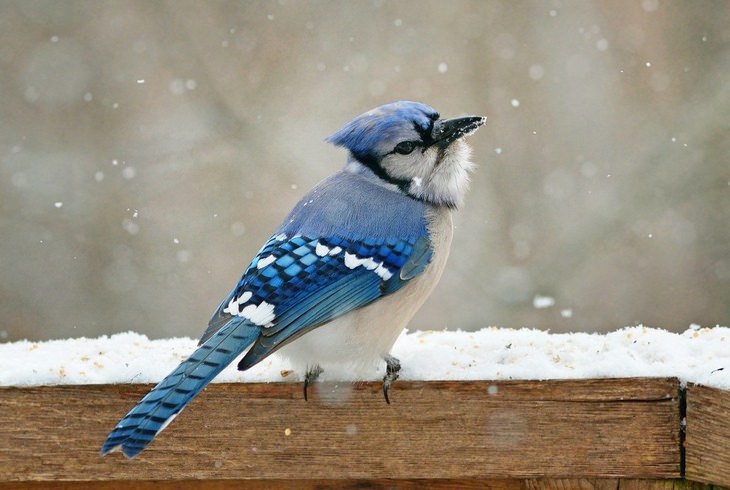1. Northern Cardinal
Also known as the redbird, this gorgeous songbird has a huge distribution, covering all of the East Coast, and spreading south to the Gulf of Mexico. Cardinals have a distinctive crest on their head and a dark mask around the beak. Males of this species are a bright and vivid red, while females are tan with red highlights.
Northern Cardinals are unique in that both males and females can sing, unlike many other songbirds where typically only males vocalize. Females often sing while on the nest, which helps them communicate with their mates. The male's bright red coloration comes from carotenoid pigments in their diet, primarily from red fruits and berries. Cardinals are also known for their aggressive behavior towards their reflections during breeding season, mistaking them for rival males
2. White-Tailed Kite
This is a fairly small raptor, but also one of the most beautiful. White-tailed kites have a white torso and head, gray wings with black highlights and distinctive black marks around their eyes. their range is prominently in North and Central America, particularly in the western United States, including California, and the southern tips of Texas and Florida.
These kites are remarkable for their hovering hunting technique, often referred to as "kiting." They hover in the air, scanning the ground for small mammals, primarily rodents. White-Tailed Kites have experienced significant range expansion since the 1960s, now found in various parts of the Americas. They are slightly crepuscular, being active during twilight hours, and during the non-breeding season, they can be seen roosting communally in groups of up to 100 birds.
3. American Flamingo
The only Flamingo native to North America, American flamingos are found primarily in the Caribbean, the north coast of Brazil and the Yucatan Peninsula in Mexico, but are known to sometimes migrate to Florida. In fact, up until the 1900s, flamingos called south Florida home, and according to recent studies, there is a steadily increasing population of flamingos in the Everglades.
The American Flamingo's pink coloration is due to the carotenoid pigments in their diet of algae and crustaceans. These birds are social and engage in complex mating displays, including synchronized group dances. Flamingos feed by filtering water through their specialized beaks to capture small organisms. Interestingly, flamingos have been observed to form lifelong monogamous pairs!
4. California Quail
As you could probably guess by its name, this gamefowl is native to California (as well as the Baja California peninsula in Mexico) and can also be found in smaller numbers in the Pacific Northwest. These birds are adorned with a forward-drooping plume, and as with other fowl, males have a striking pattern while females are tawny. The California quail’s favorite pastime is taking dust baths: the quails burrow midway into the earth and then wriggle about and flap their wings, raising up a cloud of dust.
Known for their distinctive "chi-ca-go" call, California Quails are social birds that often form coveys. These groups provide protection against predators. Their forward-drooping plume, or topknot, is a characteristic feature that aids in camouflage
5. Baltimore Oriole
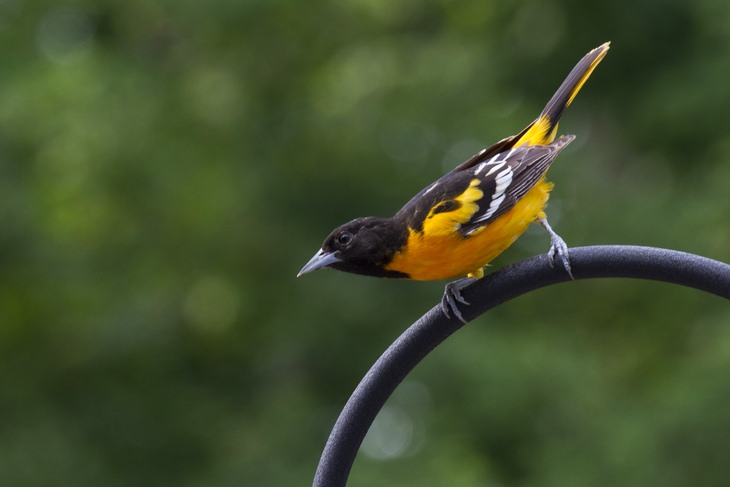
Source:
JDAnother common but nevertheless beautiful sight is the state bird of Maryland. Despite their name, Baltimore oriole are common all around the Northeast and Midwest around the warm seasons, and winter in the Caribbean, Florida and Central America. Orioles have a bright yellow torso that can appear orange in some males. Males also have a black head, while females’ heads are yellow.
Baltimore Orioles are noted for their beautifully woven, pendulous nests, which hang from tree branches. Females primarily construct the nests using plant fibers and other materials. Orioles have a varied diet that includes insects, fruits, and nectar, making them important pollinators. They are particularly attracted to dark-colored fruits like mulberries and cherries.
6. Greater Sage-Grouse
One of the most sexually-dimorphic species of fowl, the dun, mottled female looks nothing like the majestic male grouse. The males are large, with a gorgeous and dense white breast that gives them the appearance of wearing a thick fur scarf or vest. During mating displays, males spread out their tail feathers in a fan and inflate two yellow skin sacs in their breast.
These birds are famous for their elaborate mating displays, where males gather in leks (gatherings of male animals competing for females) and perform dances in the hope of catching a potential mate's eye. The displays involve puffing up their chests, fanning their tail feathers, and making unique popping sounds with their air sacs. Sage-Grouse depend heavily on sagebrush ecosystems for food and cover, making the conservation of these habitats crucial for their survival.
7. Blue Jay
It’s hard to imagine, but this beautiful songbird is a cousin to crows and ravens. Blue jays have a white underbelly with blue plumage on their backs and wings and a pronounced crest like the cardinal’s. Their plumage is most striking around the tips of the wings and the tail, where it takes a pattern like a butterfly’s. Blue jays can be found all over the East Coast, the South and the Midwest.
Blue Jays are highly intelligent and have complex social systems. They are known to mimic the calls of hawks, which can help them deter other birds and potential predators. Blue Jays play a vital role in forest ecosystems by caching acorns, which can lead to the growth of new oak trees. Their blue coloration is due to the structure of their feathers, which scatter light to produce the blue hue, rather than pigments.

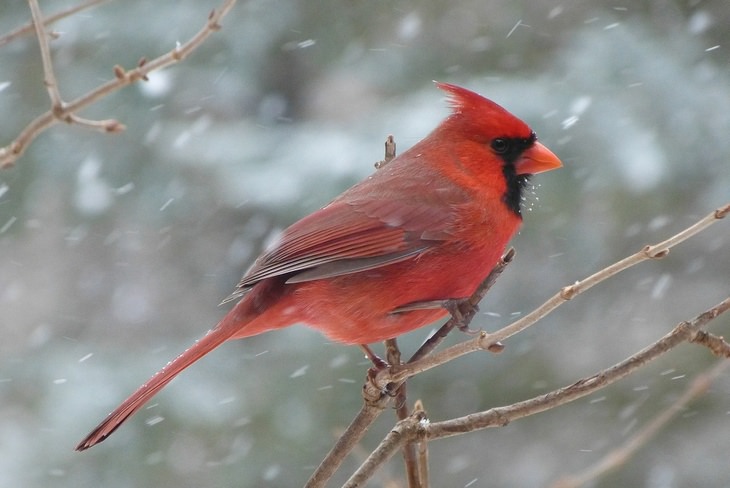
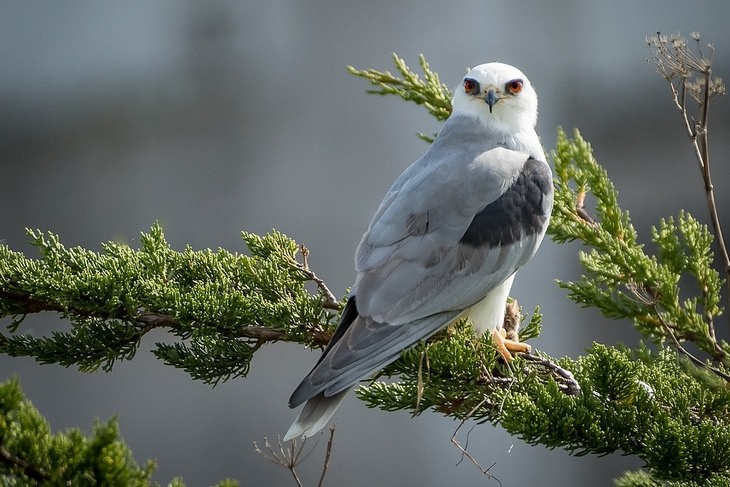 Source: Becky Matsubara
Source: Becky Matsubara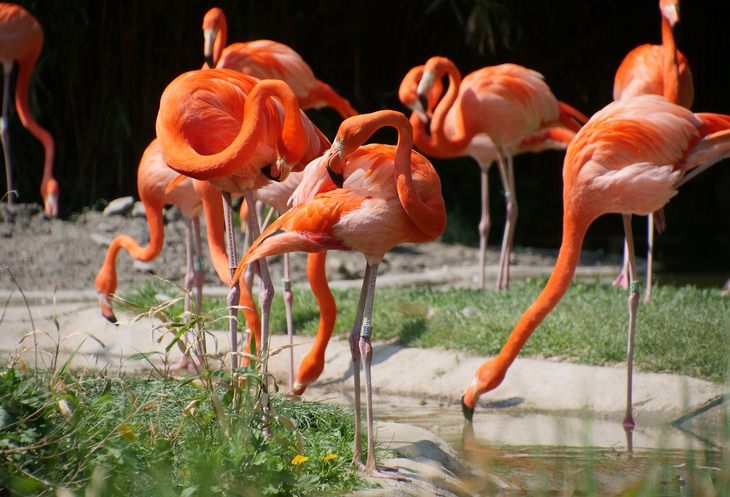

 Source: JD
Source: JD Source: Pacific Southwest Region USFWS
Source: Pacific Southwest Region USFWS